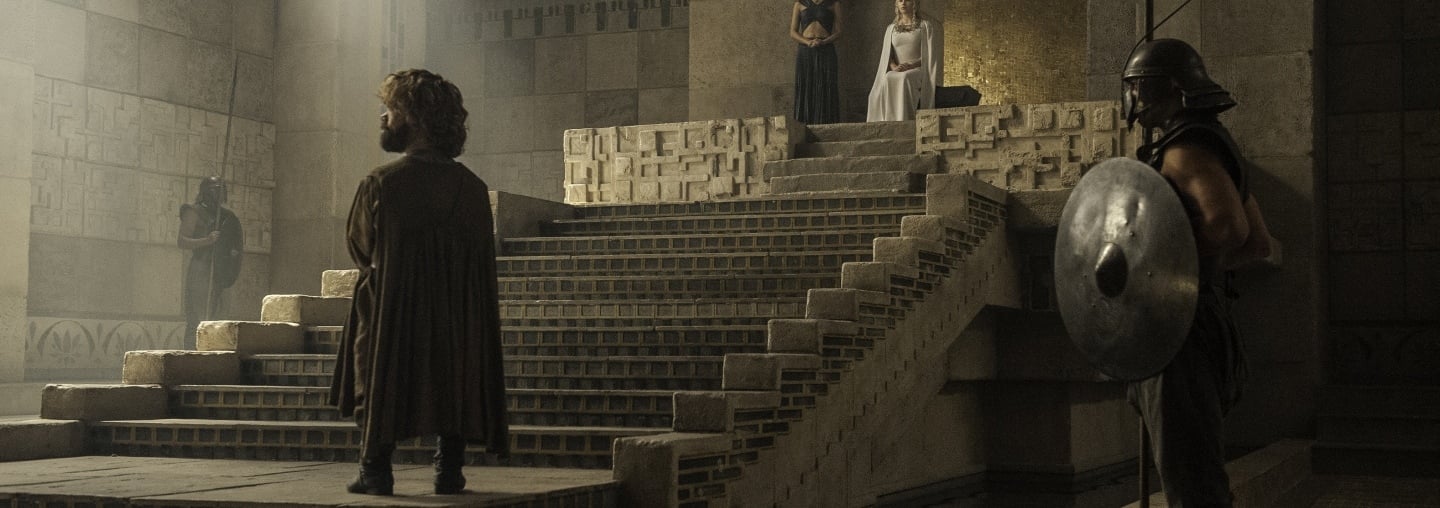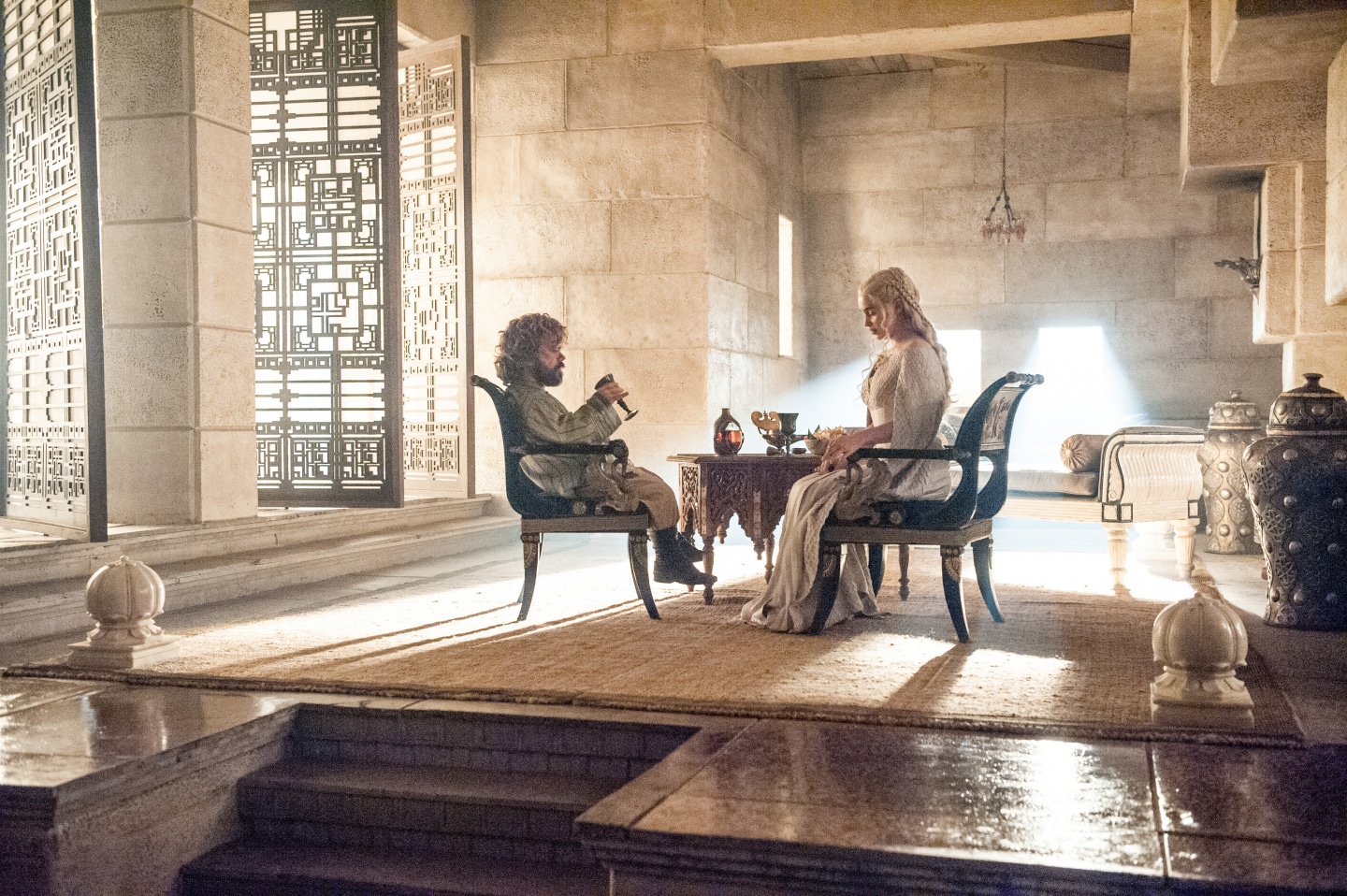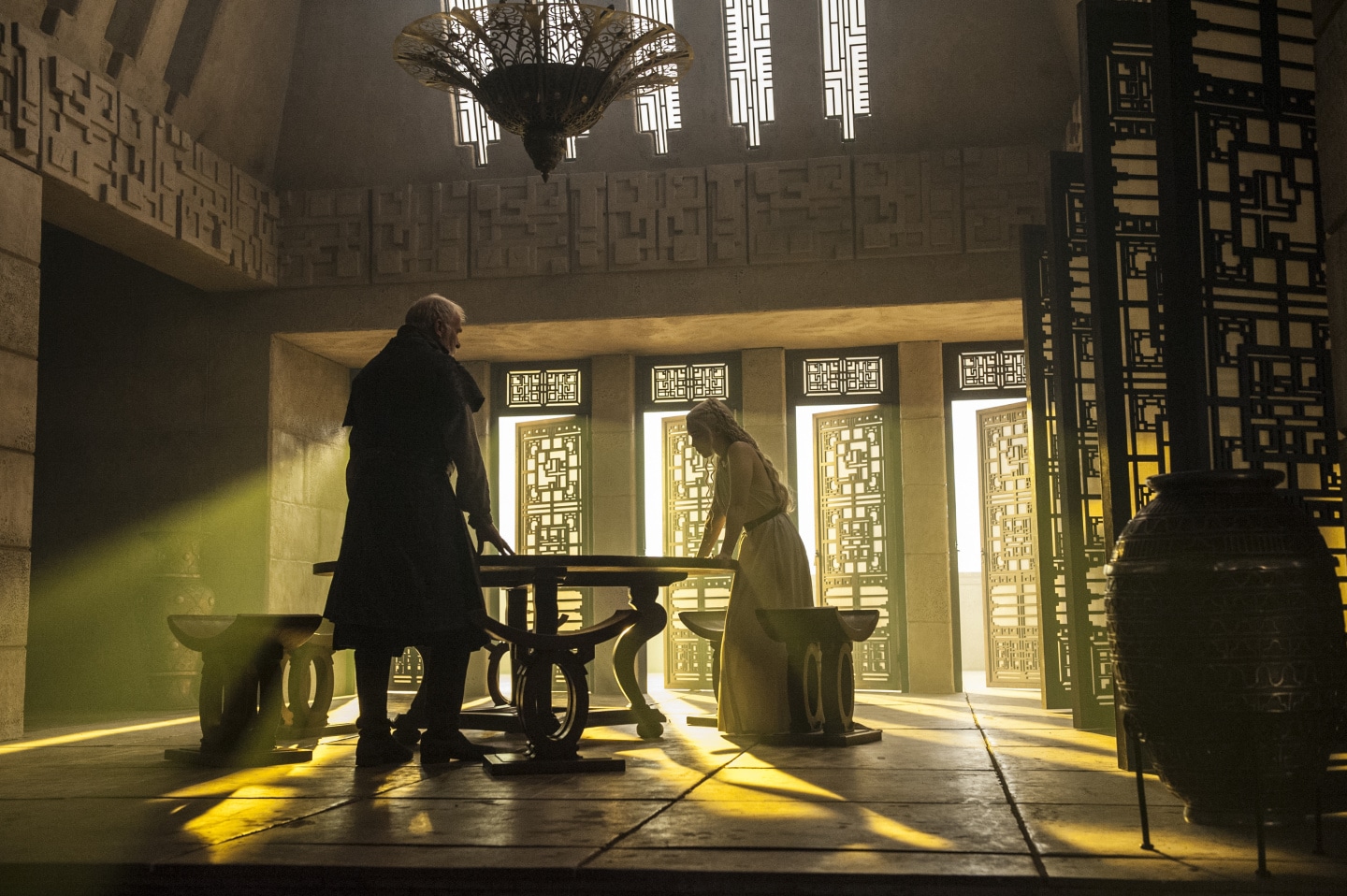
Game of Thrones Set Designer Finds Inspiration in Frank Lloyd Wright’s Work
Frank Lloyd Wright Foundation | May 13, 2019
In the Spring 2019 issue of the Frank Lloyd Wright Quarterly magazine, “Timeless: Frank Lloyd Wright + Contemporary Pop Culture,” we spoke with three contemporary set designers who worked on Game of Thrones, Westworld, and Isle of Dogs about the inspiration they found in Wright’s designs, and how his work led them to create some of the most iconic, recognizable sets. Here we give you a sneak peek at the article, and share thoughts from Deborah Riley, production designer on HBO’s Game of Thrones.
Think of a scene from a movie or TV show that has had an impact on you. Now try to pinpoint what it is that makes that moment come to life. Certainly the actors and screenwriters bring the stories to life with their character development, and the cinematography frames images in a particularly pleasing way; but one element that can really make a scene is the setting, where the scene takes place. Sets often function as another character, communicating a mood, idea, or tone that would otherwise not come across.
Over the decades, many set designers and art directors have been inspired by the work of Frank Lloyd Wright to make their settings impactful. Whether filmed on location in one of his structures, or subtly incorporated with signature Wrightian design elements, Wright’s influence can be seen in countless popular movies and TV shows. His timeless designs have proven to seamlessly fit into a variety of cinematic worlds, time periods, and genres.
The following is an excerpt from an article in the upcoming Spring 2019 issue of the Frank Lloyd Wright Quarterly magazine, “Timeless: Frank Lloyd Wright + Contemporary Pop Culture.” To read the full article, become a member of the Frank Lloyd Wright Foundation and subscribe to the Quarterly magazine.

Deborah Riley
Deborah Riley has won awards for her work as an art director and production designer on a wide variety of well-known films and shows. Before her career in set design, she studied architecture for three years, where she was first introduced to Wright’s work. Today, you can find her designing ornate sets for the wildly popular HBO show, Game of Thrones, an epic medieval fantasy series that kept fans entranced for eight seasons.
When creating Meereen Palace in Game of Thrones, Riley found inspiration in Wright’s Ennis and Hollyhock Houses, located near one of the show’s filming locations in Los Angeles. Several distinctive Wrightian elements, including textile blocks and geometric stained glass, can be seen in Meereen Palace.
Q: As a production designer, how has architecture inspired you and what led you to the work of Frank Lloyd Wright?
One of my great joys working as a production designer is being able to create spaces that make reference to various periods and designs. Although I didn’t realize it at the time that I left architecture school, I feel I have been able to deeply explore and appreciate the design principles of someone like Wright more than I ever could have, had I continued into a career as an architect. It has allowed me to shamelessly explore and experiment with what made his spaces work. Game of Thrones was a wonderfully rich learning experience where I would like to think that the basic principles of architecture were applied every day.

Tyrion Lannister (Peter Dinklage) and Daenerys Targaryen (Emilia Clarke) Confer in Meereen Palace. Photo courtesy of Helen Sloan/HBO.
When Meereen was first described to me, I was told it was a pyramid city and that its wealthiest residents lived inside the pyramids. Having visited Mexico City a number of years ago, I first started revisiting my photographs of Mayan pyramidal architecture and I suddenly recalled Frank Lloyd Wright and his Mayan Revival Period of the 1920s. As we had to work so quickly on Game of Thrones, at first it felt like cheating, but it gave me great comfort to think that he had already solved the problem of how to make the monolithic structures also feel domestic. Just as importantly, his work, to me, does not speak of a particular period, and it was possible for us to translate the spaces so that they felt simultaneously medieval and modern.

Illustration by Ellen Surrey.
Q: Did you learn anything more about Wright’s design principles or his work as you engaged with the architecture of the Ennis House and the Hollyhock House and executed the design of Meereen Palace in Game of Thrones?
When creating spaces that are designed to be photographed, it is important to bear in mind how the camera will see them. I always want to be able to provide something for the camera to “bite” into. I learned a lot about the textile block houses, which turned ugly concrete blocks into some thing extraordinary.
It is important to give the camera light and shade and make seemingly boring expanses interesting for the eye. This worked for us in two ways in Meereen: The use of the blocks meant that we were able to give the space much more texture than it otherwise would have had, and by punching through the block, we were also able to give the cinematographers an excuse to be able to push the light through.
Q: Why do you think Wright’s work continues to inspire modern day TV and movies 152 years after his birth?
The continued relevance of Wright’s work is a testament to the boldness and courage of his vision as well as the innovation of his designs. Good design is good design. It is rare. It also photographs well.
As a production designer, it is knowing good design when you see it and understanding how you can translate the principles of space to the story you are telling in a way that will photograph easily and beautifully. I have always used Wright’s work as a place to start in ways that are both subtle and obvious.

Barristan Selmy (Ian McElhinney) and Daenerys Targaryen (Emilia Clarke) discuss strategy in Meereen Palace. Photo courtesy of Helen Sloan/HBO.
THE FRANK LLOYD WRIGHT ENNIS HOUSE COLLECTION
We’ve gathered products inspired by the designs of Wright’s Ennis House. The geometric stained glass windows that influenced the Game of Thrones Meereen Palace also provided a muse for our coasters, mugs, cufflinks, trivets, and more. Incorporate designs from the architectural Hollywood icon with more than 80 screen appearances into your daily life!




